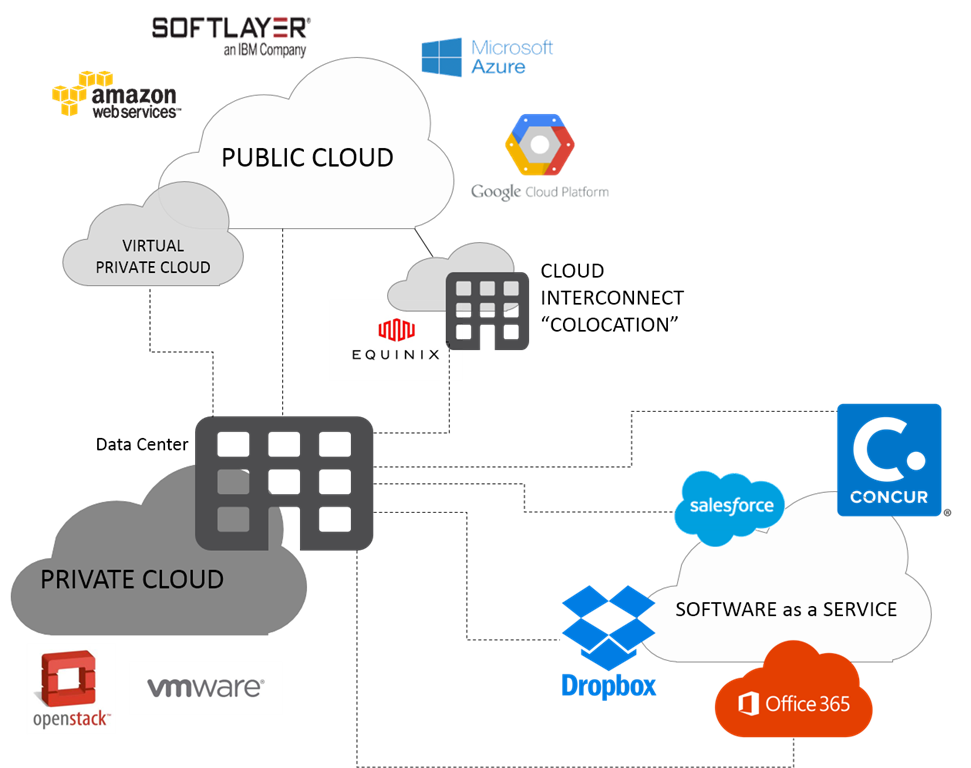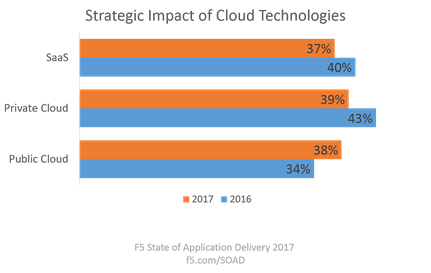グレートクラウドディアスポラ: 10年間の変化
Amazon が Amazon Web Services を導入してデジタルの世界に衝撃を与えてから 10 年が経ちました。 あるいは、今日ほとんどの人がパブリック クラウドと呼んでいるもの。 それ以来、状況はますます複雑になり、さまざまな新しいモデルが古いモデルと融合し、データセンターと融合して、今日では「クラウド」という非常に広範な傘の下に収まる、まさに豊富な選択肢が提供されています。

パブリッククラウドが登場して間もなく、仮想プライベートクラウドが登場しました。 企業が制御とセキュリティを重視していることを認識し、仮想プライベート クラウドは、組織がほぼ誰とも関わることなくクラウドに拡張できる手段となりました。 当然のことながら、騒々しい隣人やリソース共有が、applicationのパフォーマンスやセキュリティ制御に関する規制要件などの重要なビジネス指標にどのような影響を与えるかは、私たちにはよくわかりませんでした。そのため、仮想プライベート クラウドは、パブリック クラウドの柔軟性を備えた「プライバシー」を提供することで、ある程度の安心感を与えてくれました。
「クラウド」が「THE THING」になるとすぐに、applicationサービス プロバイダー (ASP) は、Software as a Service (SaaS) の旗印の下、クラウドとしてブランドを変更しました。 企業は長い間、「構築するか購入するか」という決断に苦慮してきましたが、SaaS は企業に「レンタル」という第 3 の選択肢を与えました。 初期の「クラウド」の利益のほとんどは SaaS によるものでした。 専門家はクラウド全般が否定できない成功であると宣言しましたが、現実には、組織がソフトウェアの購入から、この変化に対応するために自社のビジネスモデルを変更した同じベンダーからのソフトウェアのレンタルへと移行したため、SaaS が長年にわたって市場全体を支えてきました。
運用モデルとしてのクラウドが、オンプレミスで維持することを主張するapplications(多数あります)のアーキテクチャ基盤として組織に最終的に採用されることは、当初から避けられないことでした。 導入の原動力がコスト削減から俊敏性とスピードの向上へと移行するにつれ(デジタル経済の台頭の影響により)、パブリック クラウドへの移行を妨げる特定の要件を犠牲にすることなくスピードと俊敏性を享受する手段として、組織はプライベート クラウド(オンプレミス)にますます注目するようになりました。
デジタル経済には IoT とその類似物である IIoT (Industrial Internet of Things) が含まれており、どちらも組織とクラウド プロバイダーの両方に急速に圧力をかけています。 これらのテクノロジーと、アプリ全般のパフォーマンスへの重点の高まりにより、もう 1 つのハイブリッド テクノロジーが登場しました。このテクノロジーは、長い (そして確かにより正確な) 説明を言うのも入力するのも大変なので、「コロケーション クラウド」と呼ばれることがよくあります。 コロケーション クラウド (より正確にはクラウド相互接続ロケーション)は、パブリック クラウドの柔軟性とコスト削減 (相互接続側) に加えて、組織のセキュリティと制御のニーズ (コロケーション側) を満たす本質的な能力により、驚異的な成長を遂げています。 セキュリティ、制御、そしてパフォーマンスに対するほぼ基本的なニーズに対応するコロケーション クラウドは、今後数年間で間違いなく採用が増加し続けるでしょう。

これが今日に至るまでの経緯であり、企業ビュッフェには複数のクラウド構成があり、組織はその中から選んで組み合わせることができます。 だからこそ、私たちは「ハイブリッドが新たな標準だ」と言う傾向があるのです。 「ハイブリッド」という用語の使い方は完全に正確ではないかもしれませんが、意図した意味合いは伝わってきます。つまり、組織は過去 10 年間に誕生したほぼすべてのモデルでクラウドを利用しているということです。 そして、彼らはそれを消費するだけでなく、それがかなりの数の戦略的な影響力を持つものであると見なし続けています。
クラウドは、あらゆる形態において、application配信の現状に関する調査において、ビジネスに戦略的な影響を与えると考えられるテクノロジーのトップに留まっています。 モバイルapplicationsは、デジタル経済におけるもう 1 つの破壊的な力 (そしてデジタル経済を推進しているとも言える) であり、クラウドを上回る唯一の非クラウド テクノロジーです。 2016 年には、45% の組織が、さまざまなクラウド構成の中でも、モバイルapplicationsが戦略的な影響を与えると評価しました。 2017 年には、その割合はわずか 33% の組織にまで減少し、さまざまな形態のクラウドに移行しました。 (これについては、2017 年 1 月に完全な結果が発表されるときにさらに詳しく知ることができます。 どうぞお楽しみに!
クラウドはもはや、Amazon の EC2 を原型とする単一の運用モデルではありません。 過去 10 年間で、抽象化、自動化、オーケストレーション、ユーティリティ コンピューティングという同じコア概念を共有するさまざまなモデルに変化し、拡張されてきました。 それぞれのモデルは、他のモデルでは満たされなかった特定のニーズから生まれました。 そして、それぞれが、それ自体が戦略的な正当な「クラウド」の形態なのです。
次に何が起こるかも同様です。 そして、安心してください。次は「何でも」が来ます。 なぜなら、過去 10 年間で証明されたことがあるとすれば、それは、優れたアイデアは単一のモデルに収めることができず、課題が発生すると、それに対処するために新しい形式が進化するということです。 ディアスポラは起こりますが、クラウドの場合、それは非常に良いことです。なぜなら、選択肢があることで、組織はセキュリティやパフォーマンス、制御やコストなど、コア要件を妥協することなくデジタル トランスフォーメーションを自由に取り入れることができるからです。
クラウド コンピューティングの今後 10 年間が楽しみです。
